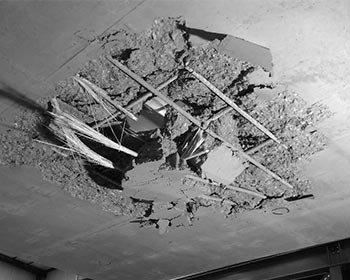MPC
Research Identifies Techniques for Longer-Lasting Bridge Decks
Posted: Jul 21, 2020
 Bridge decks strengthened with glass fiber reinforced polymers (GFRP) have shown promise for improving the service life of bridges subjected to deicing salts that corrode steel-reinforced bridges. Unfortunately, GFRP is typically brittle and prone to to possible failure.
Bridge decks strengthened with glass fiber reinforced polymers (GFRP) have shown promise for improving the service life of bridges subjected to deicing salts that corrode steel-reinforced bridges. Unfortunately, GFRP is typically brittle and prone to to possible failure.
MPC researchers at Utah State University are finding ways to improve the flexibility of bridge decks made with GFRP. They tested decks containing steel reinforcement, GFRP reinforcement, and discrete GFRP-reinforcement combined with alkali-resistant fiberglass composite macrofibers. The addition of the macrofibers with GFRP bars, or hybrid reinforced concrete (HRC), was an attempt to improve ductility in the otherwise brittle GFRP-reinforced decks. A preliminary cost analysis suggests that the HRC decks cost the same as those constructed with epoxy coated rebar. The HRC decks exhibited more flexural ductility prior to the rupture of the concrete than both the steel- and GFRP-reinforced deck panels.
The research indicates that the HRC decks provide acceptable structural performance and may greatly reduce long-term maintenance costs through elimination of corrosion.
Marc Maguire, Ph.D.
Utah State University
Structural Fiber Reinforcement to Reduce Deck Reinforcement and Improve Long-Term Performance
MPC-20-413

